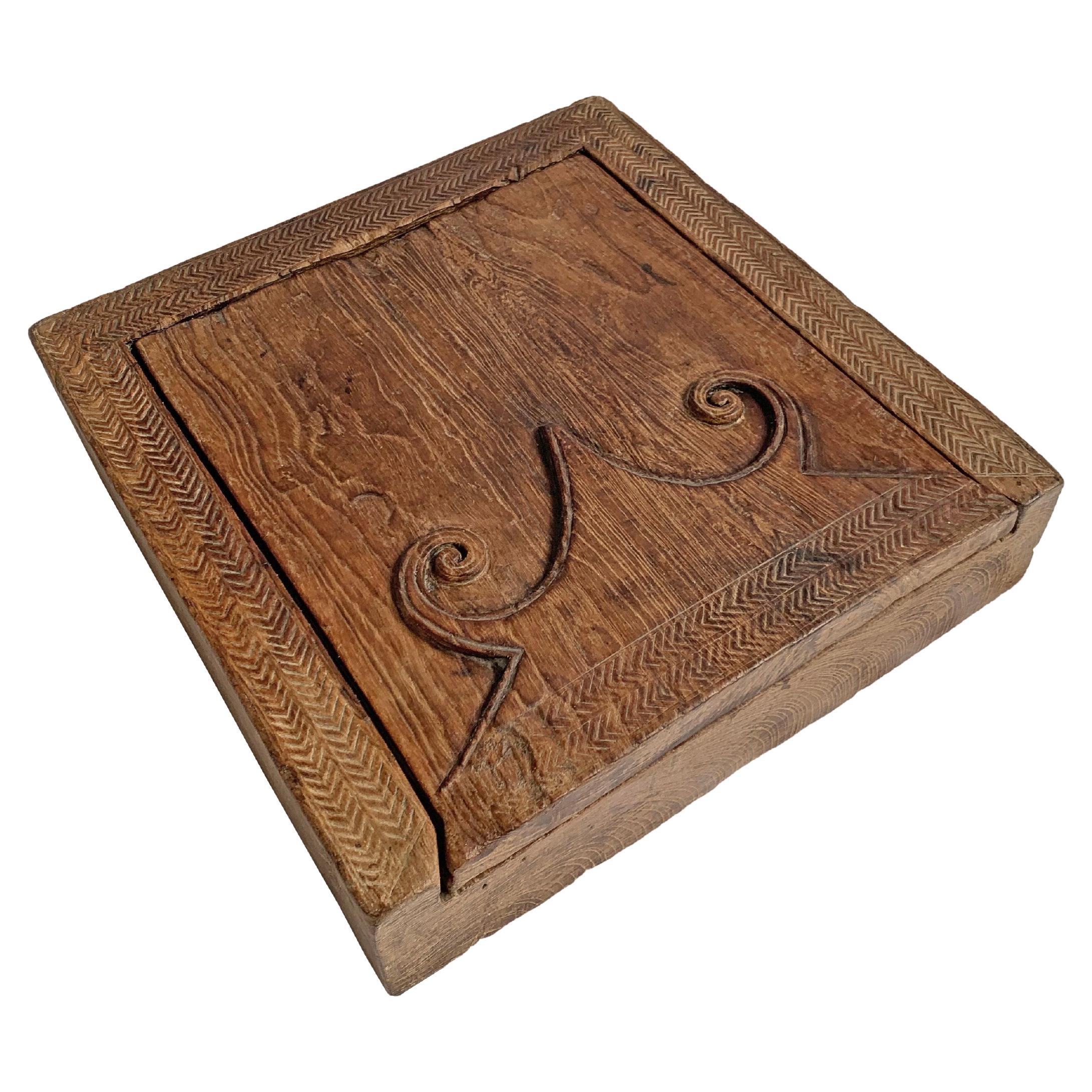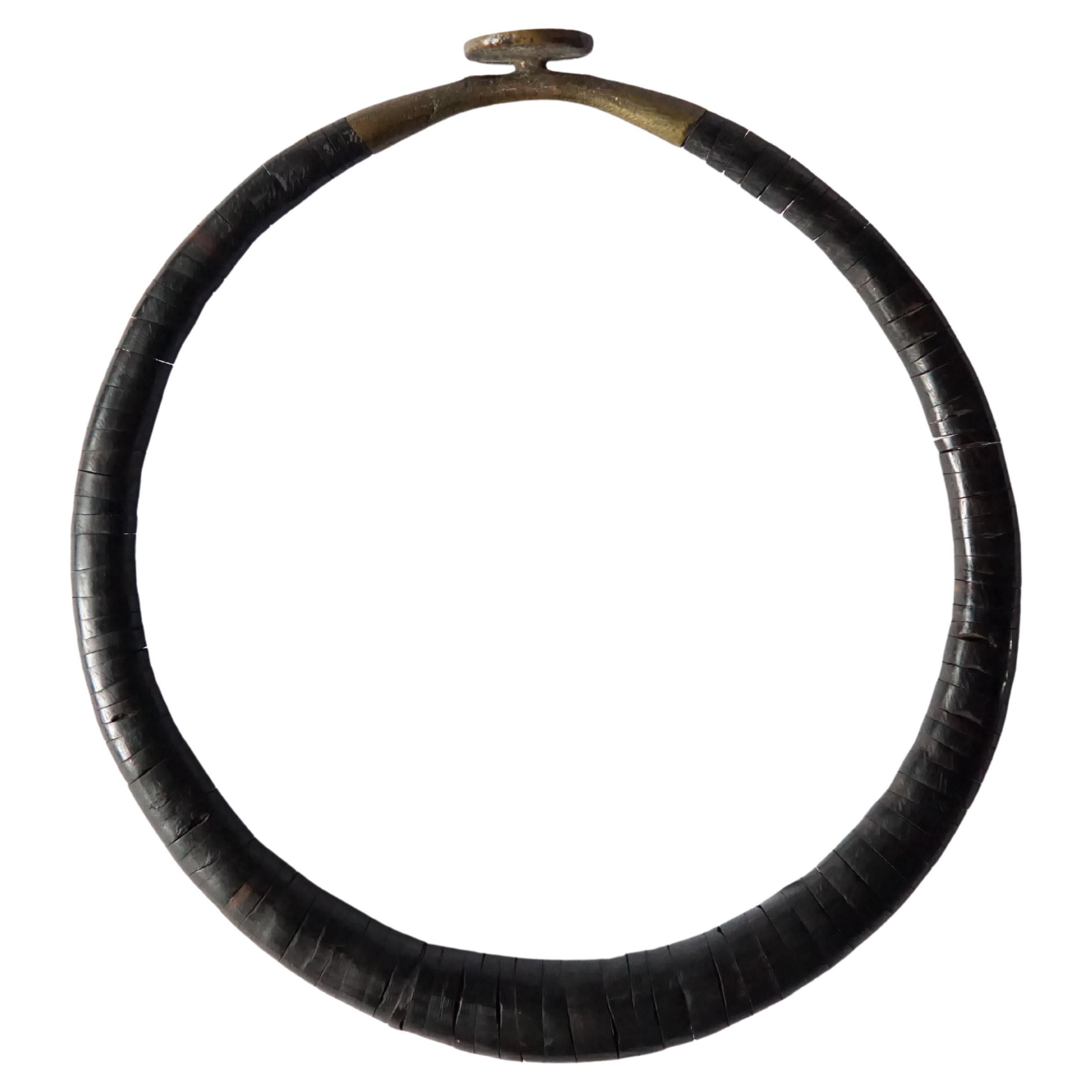Items Similar to A Nias 'Adu Zatua' wooden ancestor sculpture
Want more images or videos?
Request additional images or videos from the seller
1 of 5
A Nias 'Adu Zatua' wooden ancestor sculpture
About the Item
Indonesia, Nias, 19th century
H. 37.5 x W. 10 cm
Sculptures like the one present are not only decorative items but are believed to be vessels that house the spirits of ancestors and are used to communicate with them.
After the death of a person a wooden image or Adu Zatua was made to mediate between the human world and the spiritual realm. These kinds of figures were commissioned by noble Nias families, whereas simple and lesser quality carvings generally were found among lower class families.
In this particularly fine example, the sculptor has paid careful attention to the proportions of the different parts of the body, dividing it into three main sections – the head, the torso, and the legs. The shapes are sometimes flat, round, or have notches, but all are perfectly in balance creating a certain divine tranquillity. This Adua Zatua’s ears are decorated with earrings, and it is wearing a headdress, pointing towards a chiefly provenance.
In 1914 the Dutch gained complete control of the island of Nias and started spreading Protestant Christianity. Many ancestor statues were destroyed during the ‘Great Penitence’ religious movement in 1916. As symbols of the old religion of ancestor worship they were seen as blasphemous idols. The Dutch painter Rudolf Bonnet (1895-1976) joined his friend Jaap Kunst in March 1930 for a visit to Nias, where Kunst studied the indigenous music. Impressed by the island which remained unspoiled, Bonnet stayd there for almost a year, living with a Nias servant and making many drawings of the people of South Nias. What shocked him, however, was how the Christian mission, in his opinion, was destroying the culture and many of the traditional practices and the heritage of Nias. For a mesmerizing portrait of a Nias warrior by Bonnet, made during his stay on Nias, see: Uit Verre Streken, November 2022, no. 37 (ill.).
Provenance:
Henk Kouw, Amsterdam (1970s)
Collection Peter van Drumpt, Amsterdam
Collection Tijs Goldschmidt, Amsterdam
Private collection, the Hague (1993)
- Dimensions:Height: 14.77 in (37.5 cm)Width: 3.94 in (10 cm)Depth: 3.15 in (8 cm)
- Materials and Techniques:
- Place of Origin:
- Period:
- Date of Manufacture:19th century
- Condition:Wear consistent with age and use.
- Seller Location:Amsterdam, NL
- Reference Number:1stDibs: LU5458237873082
About the Seller
5.0
Vetted Seller
These experienced sellers undergo a comprehensive evaluation by our team of in-house experts.
Established in 1985
1stDibs seller since 2020
19 sales on 1stDibs
Typical response time: 3 hours
- ShippingRetrieving quote...Ships From: Amsterdam, Netherlands
- Return PolicyA return for this item may be initiated within 7 days of delivery.
More From This SellerView All
- Early Papua Korwar Ancestor Figure, Early 19th Century, Deep Black-Brown PatinaLocated in Amsterdam, NLAn extremely rare Papua wood sculpture of a Korwar Papua New Guinea, Cendrawasih Bay, Wandammen, early 19th century Measures: Height 24 x Diameter 18 cm Finely carved in th...Category
Antique Early 19th Century Indonesian Tribal Tribal Art
MaterialsWood
- Fine Jelutong Wood Borneo Dayak Kliau or Shield, First Half of the 19th CenturyLocated in Amsterdam, NLA fine Jelutong wood Dayak Kliau or shield Indonesia, Borneo, Kalimantan, first half of the 19th century Measures: H. 126 x W. 36 cm The kliau or klebit is the most popular ...Category
Antique 19th Century Indonesian Tribal Tribal Art
MaterialsWood
- Ashanti African Chief’s ceremonial gold and gilt-metal crown and sash on standLocated in Amsterdam, NLAn Ashanti Chief’s ceremonial gold and gilt-metal crown and sash Ghana, early 20th century Diam. 20 cm (crown) L. 128 cm (sash) H. 102 cm (incl. stand) Provenance: Private coll...Category
Early 20th Century Ghanaian Art Nouveau Tribal Art
MaterialsGold, Gold Plate, Metallic Thread
- Polychrome Wood Model of an Indonesian Toraja Dwelling or Tongkonan, C. 1900Located in Amsterdam, NLA polychrome wood model of a Toraja dwelling or tongkonan Indonesia, Sulawesi, Tana Toraja, early 20th century H. 60 x L. 94 x D. 33 cm Provenance: - Seminary Rosa Stichting, Nijmegen - Instituut voor Kulturele Antropologie van de Katholieke Universiteit, Nijmegen - With Michel Thieme...Category
Early 20th Century Indonesian Architectural Models
MaterialsWood
- Large Brazilian or Guyana Amazon Indigenous Macana War Club, 18th or EarlierLocated in Amsterdam, NLA splendid and rare Amazon indigenous wamara wood Macana war-club Southern-Guyana or Northern Brazil, Wapitxana group of the Aruak peoples, 18th century, possibly earlier Measure: H. 43 cm The deep patina of the club present, and the residue on the part where it was held, attest to its great age. This unusually large Macana is decorated with several incised whitened anthropomorphic and human figures, a decoration only found on one other documented club in the British Museum, which is illustrated in: Hjalmar Stolpe, Amazon Indian...Category
Antique Early 18th Century Brazilian Native American Objects
MaterialsHardwood
- American Diorama, Follower Gerrit Schouten, Carib Indigenous VillageLocated in Amsterdam, NLFollower of Gerrit Schouten (second half of the 19th century) Diorama depicting a Carib Indigenous camp Carved wood, papier-mâché, paint on paper...Category
Antique 19th Century Surinamer Native American Objects
MaterialsClay, Twig, Wood, Paper, Feathers
You May Also Like
- A wooden statue Siraha Salawa nobel Nias Ancestor Figure IndonesiaLocated in Chonburi, THThis wooden statue from Siraha Salawa, a noble Nias ancestor figure from Indonesia, is a striking example of Nias artistry and cultural heritage. Carved from a single piece of wood, ...Category
Antique 19th Century Indonesian Tribal Art
MaterialsWood
- Wooden Spice Box, Tribal Engravings & Sliding Top, Nias, Indonesia, c. 1900Located in Jimbaran, BaliThis spice box comes for the Island of Nias, Indonesia. Dating to the early 20th Century it was crafted from a single block of wood. It features a sliding lid, has an elegant wood te...Category
Early 20th Century Indonesian Tribal Tribal Art
MaterialsHardwood
- Hand-Carved Wooden Tribal Tray / Bowl from the Nias Island, IndonesiaLocated in Jimbaran, BaliThis hand-carved tray comes from the Nias, Mentawai Islands off the west coast, Sumatra, Indonesia. It is hand-carved from a single block of wood. Trays such as these were used to di...Category
Mid-20th Century Indonesian Other Decorative Bowls
MaterialsWood
- Nias 'Kalabubu' Coconut & Brass Headhunter NecklaceLocated in Jimbaran, BaliThis 'Kalabubu' necklace, also known as the 'head-hunter' necklace made out of coconut and brass is the most important ornament for the men of Southern Nias Island, North Sumatra...Category
Early 20th Century Indonesian Tribal Tribal Art
MaterialsBrass
- Nias 'Kalabubu' Coconut & Brass Headhunter NecklaceLocated in Jimbaran, BaliThis 'Kalabubu' necklace, also known as the 'head-hunter' necklace made out of coconut and brass is the most important ornament for the men of Southern Nias Island, North Sumatra...Category
Early 20th Century Indonesian Tribal Tribal Art
MaterialsBrass
- Kusu wooden ancestor fetish ca 1900 DR Congo Africa Central African Tribal ArtLocated in Leuven, BENicely carved Kusu / Congo statue with beautiful face / almond shaped eyes and triangular face with beard. Top of the head is a big hole to charche the po...Category
Early 20th Century Congolese Tribal Tribal Art
MaterialsHardwood
Recently Viewed
View AllMore Ways To Browse
Antique Wooden House
Antique Wooden Round
Wooden Divider
Antique Kunst
Indonesian House
Christian Carved
Indonesia Wooden
Indonesian Wooden
Ancestor Portrait
Ancestor Portraits
Music Statue
Indigenous Folk
Indonesia Wood Carving
Indonesian Wood Carving
Wood Carving Portrait
Christian Religious Sculpture
Indigenous Carvings
Indigenous Folk Art





